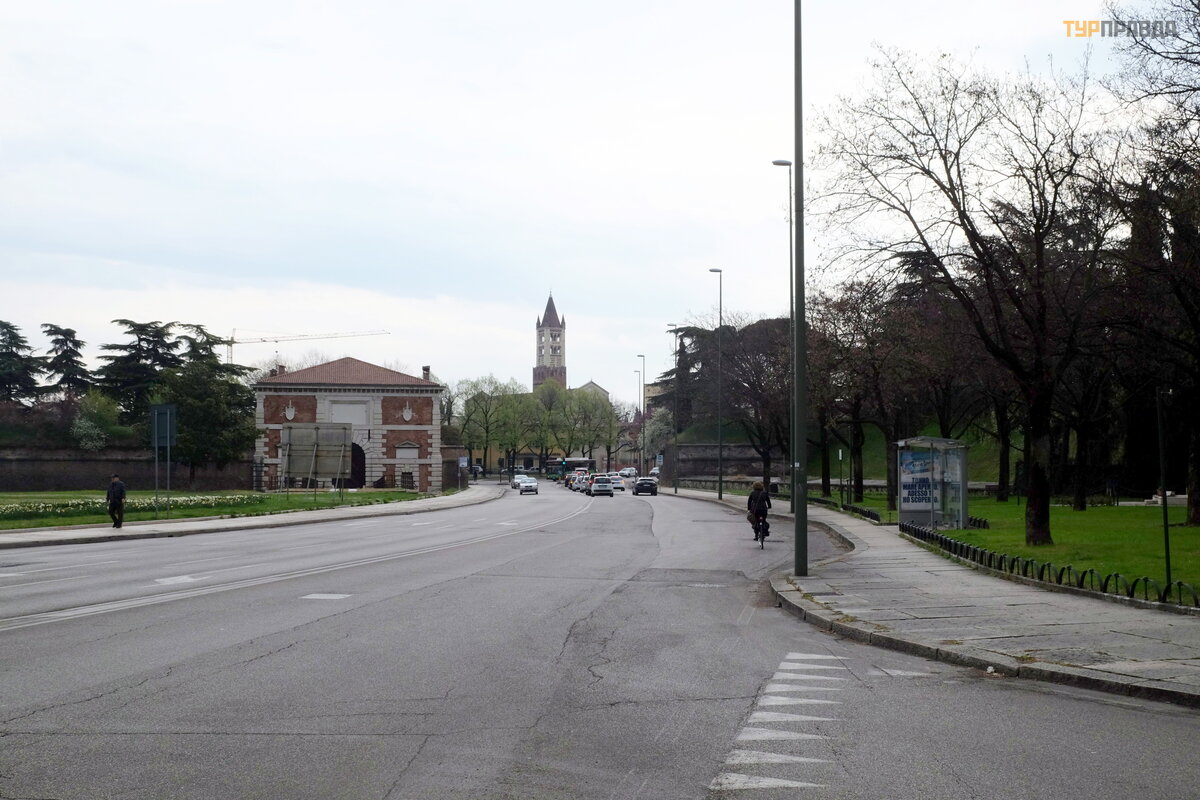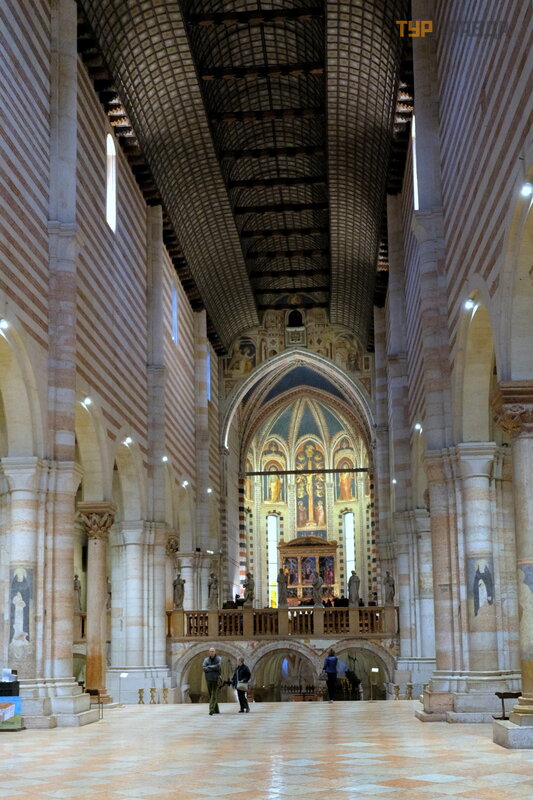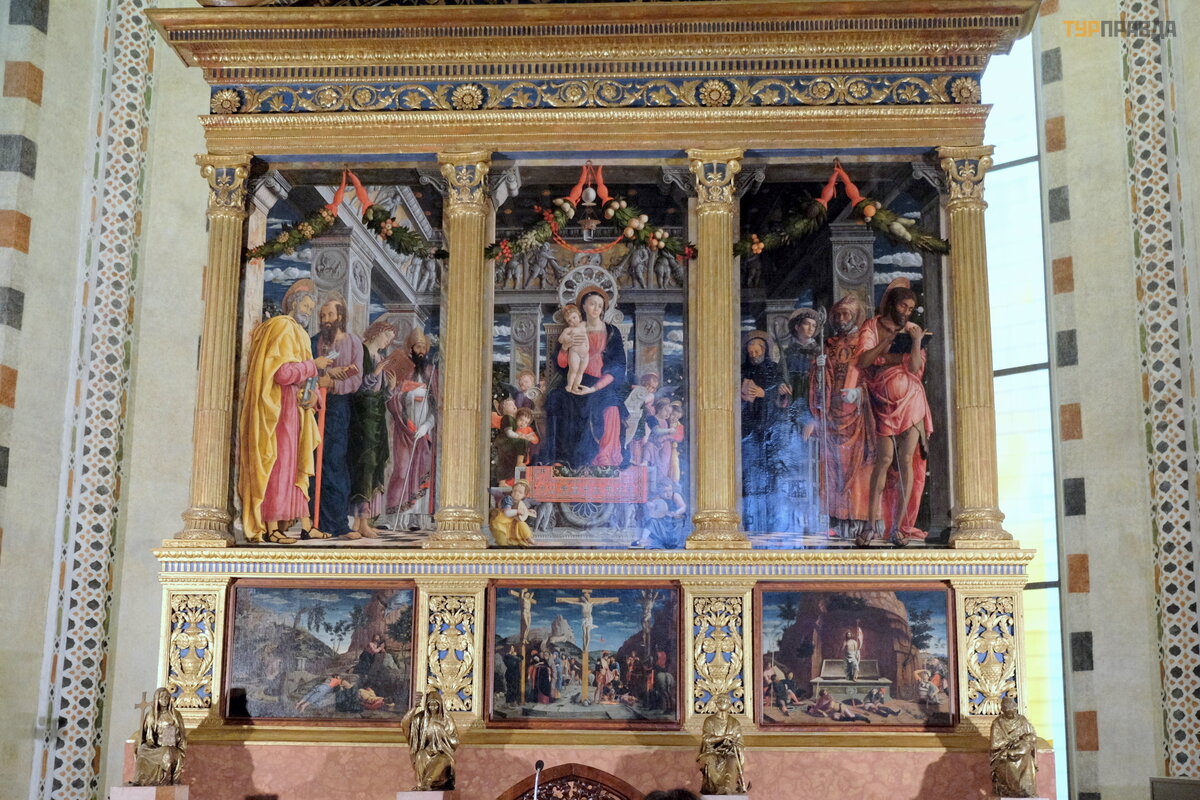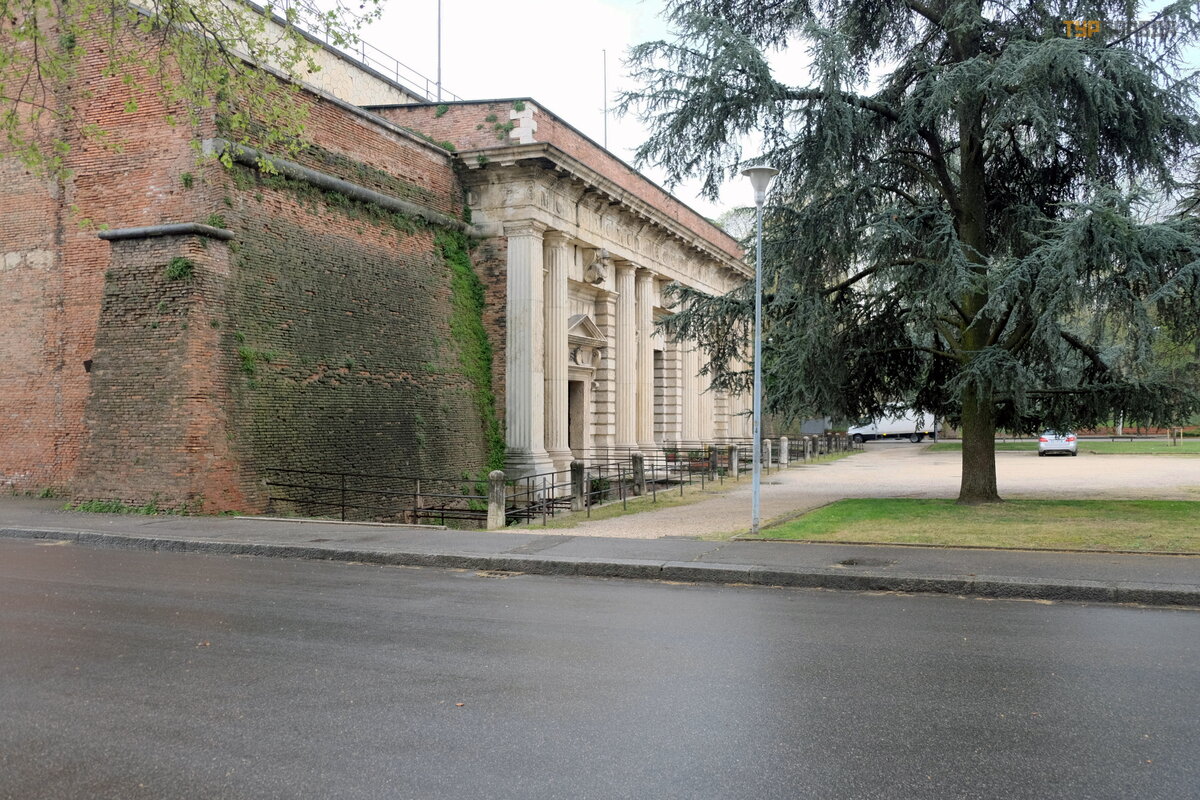Spring trip to Italy. Part 7. Verona (beginning)

A spring trip to Italy. Part 1. Trento >>>
A spring trip to Italy. Part 2. Mantova >>>
A spring trip to Italy. Part 3. Brescia >>>
A spring trip to Italy. Part 4. Treviso >>>
A spring trip to Italy. Part 5. Vicenza >>>
A spring trip to Italy. Part 6. Padua >>>
We spent the next four days in Venice.
Venice is one of my favorite cities, the beauty of which must be described by Muratov or Ippolitov, whose books I recommend to everyone. Therefore, I will tell about Venice next time in detail.
At the end of the trip, we again arrived in Verona for two nights, because we had a flight from the local airport. We have been to Verona several times, so again the story about the city will be accompanied by photos from different years.
Verona railway station - Verona Porta Nuova - is extremely convenient for travelers with luggage. Each platform has an elevator for the convenience of passengers. At the beginning of the twentieth century, namely in 1910-1913. the architect Dini reconstructed the Verona Porta Nuova station. The facades of the building are sheathed with marble slabs, the floors are decorated with mosaics. There is also a bus station near the train station.
Verona is a very convenient city for living and exploring. The main attractions are located inside the fortress walls and the Adige River, encircling the Old City. Around the Old Town are residential areas, the so-called. "Borgo" with a very good supermarket chain,
We stayed at the Hotel Porta Palio with a colorful facade, next to the gates of Porta Palio, about twenty-five minutes walk to the main street of the city. Near the hotel there are two supermarkets - "LIDL" and "MD". A turbulent drainage channel flowed outside the windows of the hotel.
Since the check-in at the hotel was from 15.00, we left our things in the storage room and went to buy food, and then explore the city.
We had a plan: to visit the four main cathedrals of Verona by purchasing a special subscription.
The churches of Verona are all free, except for these four cathedrals. A visit to each cathedral is 3 euros, the price of a subscription for 4 cathedrals is 6 euros, and when booking a room on Booking, there was also a discount for a subscription, it cost 5 euros. At the entrance to the cathedrals, an audio guide is issued for the subscription, which is included in the price.
The first cathedral on our way is the Cathedral of Saint Zeno ((Basilica di San Zeno), from the hotel we went to it through the fortress wall, past the gate of Saint Zeno (Porto San Zeno) 1541
The first church of San Zeno (Zeno) Maggiore was built in the 5th century. at the direction of Theodoric the Great over the tomb of St. Zeno, the patron saint of Verona and one of the first bishops of the city.
Initially, the church was a small sanctuary, but having undergone numerous reconstructions and destruction over the centuries, it turned into a majestic Romanesque basilica. The building was adorned with a patterned marble faç ade made at the beginning of the 12th century, and bronze portals of the 11th-13th centuries with reliefs based on scenes from the Old and New Testaments. The bell tower was built in the 11th century.
The entrance is decorated with a Gothic portal of the 12th century, created by the master of the estate of Nikolo, the author of another entrance portal of the city's cathedral.
School holidays have just begun in Italy, a school excursion was brought to the cathedral, so it was necessary to choose the time for the photo when the schoolchildren move away from the sights.
The gates of the basilica are lined with 48 bronze panels,
the oldest of which date back to the 12th century (the work of German masters), others date back to the end of the 13th century and are made by Italian masters.
The altar of one of the side chapels stands out from the sculptural decoration of the basilica (the columns supporting it are based on the symbols of the evangelists).
Statues of Christ and the apostles (13th century German master) separate the central space from the raised presbytery.
In the left small apse there is a statue of a smiling Saint Zeno, created by an unknown author.
Saint Zeno was a native of North Africa.
Under the presbytery is a crypt, which is accessed by two staircases. The vaults of the temple rest on massive columns, and the central nave on two transverse semicircular arches.
Magnificent 14th century ceiling. :
There is a traditional "Annunciation" on the triumphal arch.
In the crypt of the Basilica, in a crystal shrine, are the relics of St. Zeno:
The rest of the space is divided into nine sections by numerous columns that crown the capitals of different eras.
In the presbytery there is a painted cross from the middle of the 14th century.
And the famous triptych by Andrea Mantegna "Madonna enthroned with angels and saints", above the main altar of the basilica.
There are several small valuable altars on the sides of the room.
On the walls there are frescoes of the XIII-XIV centuries, created under the influence of Giotto (the authors are conventionally called the first, second, third master of San Zeno).
The cloister of the 13th century is attached to the basilica. Its galleries are framed by numerous arched double columns.
Several medieval tombstones are displayed in the cloister, one of which (1313
) belongs to a member of the Scaliger family.
After seeing the cathedral, we left for lunch, then bought groceries for dinner and returned to check into our hotel. After that, we again went to the Old City, but already entered by another gate - Porta Palio.
The Porta Palio gate was built in 1542-1557. The author of the project is the famous architect Sanmichele, who also created other famous gates - Porta Nuova. The place for the construction of the gate was the city stadiums (palio), mentioned by Dante.
A feature of Porta Palio is their various facades, facing the city has one arched opening, and the facade facing the road is made in classical forms, has five openings that form a covered gallery in the thickness of the gate.
Without being distracted by the sights, we immediately went to another cathedral using our paid subscriptions - San Fermo (Chiesa di San Fermo Maggiore).
We pass by the Lion Gate - Porta Leoni (Porta Leoni). Antique Roman gates, they got their name from the sculptures of lions that adorn the nearby tomb.
San Fermo Maggiore built next to the Navi Bridge on the site of the Old Roman Bridge, the Navi Bridge was built in 1373
Actually, this is not one, but two churches: this is especially clearly seen from the outside, where the Gothic elements of the apse crown a strict Romanesque foundation. The Church of Saint Fermo was built on the site of the martyrdom of two Christians in 361. Their names were Fermo and Rustic. For some reason, the church bears the name of only one martyr. The lower church dates from 1065,
it was built by the Benedictine fathers on the site of the ruins of an even more ancient sanctuary.
The arch of the majestic upper church, erected in 1313, is made in the form of a ship's keel.
The church is decorated with medieval frescoes.
Nearby is the gravestone of Brenzoni (c. 1440) by Giovanni di Bartolo, and above it is the fresco of the Annunciation of 1426 by Pisanello (1377-1455).
The main altar of the church is located behind a semicircular colonnade and is decorated with frescoes from the 14th century.
In the Alighieri Chapel, located to the right of the main altar, you can see tombstones made in the 16th century by Michele Sanmichele.
The pulpit from 1360, covered with a Gothic canopy and surrounded by frescoes by Martino da Verona.
In the lunette on the entrance wall is the 1363 fresco "Crucifixion" by Turone.
There is a staircase leading to the lower church from the upper one.
The lower church, the oldest part of the temple, retains the features of the original Romanesque building of 1065.
Tombstones and frescoes of the 12th-14th centuries have been preserved in the lower church.
In the altar of the lower church there is a wooden crucifix of the 14th century.
When leaving the church, the weather turned bad and we were already walking to the hotel in the rain.
Thus passed the first day in Verona.
















































































































The city is really impressive! So many interesting monuments!
Город действительно впечатляет! Столько интереснейших памятников!
The city is really impressive! So many interesting monuments!
Город действительно впечатляет! Столько интереснейших памятников!
Amazing! I really want to see with my own eyes...
Восхитительно! Очень хочется увидеть своими глазами...
Amazing! I really want to see with my own eyes...
Восхитительно! Очень хочется увидеть своими глазами...